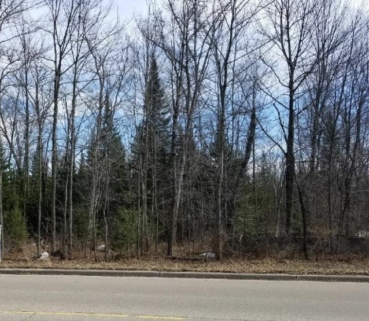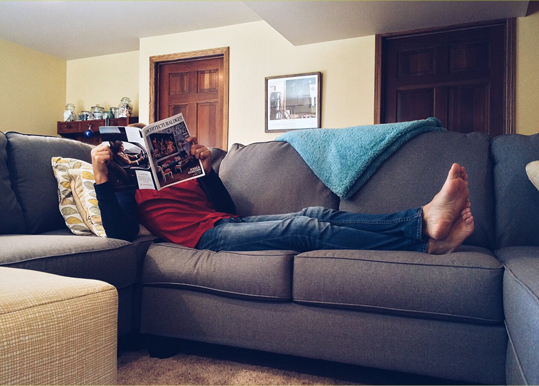Things They Don’t Teach in School: Home Loans 101
Before you start looking at what’s on the market and dreaming of paint colors, it’s important to figure out how you’re going to afford a new home. When it comes to getting financing, there are a ton of case-by-case scenarios so it’s important to talk to a professional about how much you can afford, what payments and terms are like, and more, but it helps to have a little background information.
When you begin to dig into your options, it’s important to ask about things like interest rates, whether they’re fixed or variable, if there’s a penalty for paying it off early, and many other details. However, to get started, it’s good to have some background knowledge on your options.
Conventional Loan
AKA: Conforming loans, non-conforming loans, portfolio loans, sub-prime loans
Property Type: Single-Family Primary Residence, Second home, rental property
How it works: A lender such as a bank or credit union issues the loan without any government backing
Benefit of Using: Can have lower down payment, lower monthly payments, and higher loan amounts for people with good credit
Down payment: As low as 3%
Credit: Generally best for people with a credit score of 680 or higher
Income Requirements: Varies by lender
Prepayment Penalty: Varies by lender
Mortgage Insurance: Not generally required with down payment of 20% or more, lower than FHA mortgage insurance costs, and is usually able to be cancelled with equity reaches 20%
Tips:
- Standard loan limits exist, but are higher than with FHA loan ie. $453,100 for 1-unit home and can vary based on area
U.S. Federal Housing Administration Loan
AKA: FHA loan
Property Type: Single-Family, Condos, Multi-Family, and Manufactured
How it works: Private lenders issue the loans, FHA provides backing. If homeowner doesn’t repay loan, FHA will pay lender instead.
Benefit of Using: Lenders are willing to make substantial mortgage loans in cases they normally wouldn’t because of FHA backing.
Down payment: As low as 3.5% — can come from gift money or seller help
Credit: Can have thin credit or history of credit problems. Two or three years after a financial hardship is typically enough time to qualify.
Income Requirements: No minimum is required, but you need enough to demonstrate the ability to repay the loan. High incomes aren’t disqualified as with some other first-time buyer programs.
Prepayment Penalty: None
Mortgage Insurance: Required
Tips:
- Check with several lenders. Lenders can set standards that are more strict than minimum FHA requirements, so if you’re having troubles with one, check with another.
Credit scores below 580 typically require more than the 3.5% down payment - There are maximum loan amounts set that vary by area. Find out what your local limit is at the HUD website
- For people with low or no credit, FHA can be a great choice, but those with high credit scores may find better rates through a different program.
USDA Rural Development Guaranteed Housing Loan Program
AKA: U.S. Department of Agriculture Mortgage Program
Property Type: Owner-occupied primary residences
How it works: USDA backs a mortgage issued by a participating local lender, similar to VA or FHA loans
Benefit of Using: Help low and very low income applicants. Income thresholds vary by region, but with subsidies, rates can be as low as 1%
Down payment: 0%
Credit: Applicants with scores about 640 receive streamlined processing, but those with lower scores or limited credit history can still qualify.
Income Requirements: Varies by region, but generally only for low income applicants.
Prepayment Penalty: None
Mortgage Insurance: Requires upfront fee of 1% of total loan amount and mortgage insurance fee equal to 0.35% of the loan balance per year.
Tips:
- USDA mortgages are designed to help those with the greatest need. This means individuals or families that are 1) without “decent, safe and sanitary housing” 2) unable to secure a home loan from traditional sources and 3) has an adjusted income at or below the low-income limit for the area where they live
- Typically issues direct loans for homes with 2,000 square feet or less
- Metro areas are generally excluded, but some opportunities may exist in suburbs. Rural locations are always eligible
VA Loan
AKA: U.S. Department of Veterans Affairs Home Loan program
Property Type: Owner-occupied single family, Condos, manufactured home, and in some cases new construction can qualify
How it works: VA loans are issued by private lenders and backed by the U.S. government
Benefit of Using: Only available to active duty military member and veterans, this program helps service members purchase a home without a downpayment or excellent credit.
Down payment: 0%
Credit: No official minimum, but borrowers typically look for a score of 620
Income Requirements: No maximum, but does have a unique “residual income” qualifier
Prepayment Penalty: No
Mortgage Insurance: Not required
Tips:
- In most parts of the country, VA loans can be used to purchase a home worth up to $453,100 without a down payment. In high priced markets, this can be increased. See your area here.
- Like other government-backed loans, lenders may have more stringent requirements than the VA requirements. Shop around to find the best option for you.
























